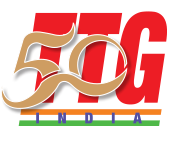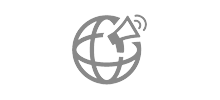Battered by the coronavirus pandemic, hotels across Asia-Pacific continued to perform poorly in Q2, with a gradual U-shaped recovery likely, according to Colliers International’s Hotel Insights 3Q2020 report.
The report showed that overall room occupancy and average daily rate (ADR) for hotels in the region decreased to 33.9 per cent and US$60.32, respectively. Revenue per available room (RevPAR) for the region declined by some 69.9 per cent year-on-year.

In terms of room occupancy, most markets witnessed year-on-year declines in excess of 40.0 per cent, while Singapore only declined by 14.5 per cent. Japan, Thailand, Hong Kong and Vietnam led the field in being the top five lowest performers.
In local currency terms, Thailand and New Zealand are the only markets that witnessed year-on-year increases in ADR in excess of 2.0 per cent in Q2. Meanwhile, Singapore’s growth gaming revenue (GGR) is expected to drop between 65-75 per cent this year.
Govinda Singh, executive director and head of hotels & leisure for valuation & advisory services, Asia, commented: “The global economic outlook is expected to remain subdued in the near term given the ongoing uncertainty and risks of new waves of Covid-19. Therefore, the outlook for the hospitality industry in the region is expected to be dimmed in the near term.
“Nonetheless, we believe the hospitality industry will rebound when travel returns, given its legacy of resilience and agility. To prepare for hotels reopening, hoteliers will need to take a cross-disciplinary approach so that hotels are well-positioned to build public trust and offer compelling product and service offerings, enabling hotels to thrive in the new operating environment with an evolving customer mix and preferences.”
Domestic travel will return first while international travel, particularly if it involves air travel, will take a longer time to recover. The weekend leisure segment is expected to lead the recovery, driven by the pent-up demand for travel as international travel restrictions and quarantine measures remain largely in place globally.
Underpinned primarily by essential business travel, the corporate travel segment should be next to return, followed by the extended leisure segment, as consumers’ confidence increases over time alongside the lifting of international travel restrictions. Corporate and group segments will likely be last to recover given the high adoption of technology as an effective platform for business activities.
As markets start to recover, consumers will prioritise health, safety and hygiene when it comes to travel planning and decision making. Personal space will also be more important; instead of large tour groups, independent travel will take precedence and people will likely prefer bespoke holidays and seek out travel experiences with a purpose (such as health and wellness, eco-travel, etc.).
Technology will also take on a more critical role in the traveller ecosystem and be a key tool in the revival of travel. Robots, chatbots, automation, recognition technology, artificial intelligence, internet of things, and virtual reality will become increasingly commonplace.
The gradual lifting of restrictions and the implementation of the Chinese government’s stimulus plans, alongside the promotional initiatives to spur growth and consumption, have encouraged the return of domestic tourism in China. This was reflected in the tourism receipts generated from domestic tourism during the Labour Day holiday in May, which was RMB47.6 million (US$6.8 million), as compared to that of RMB8.3 million (US$1.2 million) during the Tomb Sweeping Day holiday in April.
In line with the improving trend of domestic tourism, the hotel industry in China saw an uptick in occupancy levels month-on-month after bottoming out in February. China has also been in discussions with several countries on the easing of borders for essential business travel.
The most liquid markets in Q2 were Japan and South Korea, while markets such as Hong Kong SAR, China and Taiwan saw little investment sales during the quarter. With international travel restrictions in place, domestic investors remain the dominant group in investment transactions.
In the coming months, investment activity is expected to gain pace as investors move to take advantage of any opportunities that will emerge, although cautious sentiment and stricter underwriting remain key given the evolving situation.
For value-add investors and those looking to create a presence in the region’s key city and resort markets, this may be the right time to explore. With access to mainstream financing likely to be limited in the near term, cashed-up investors who can transact quickly will be in prime position.
















